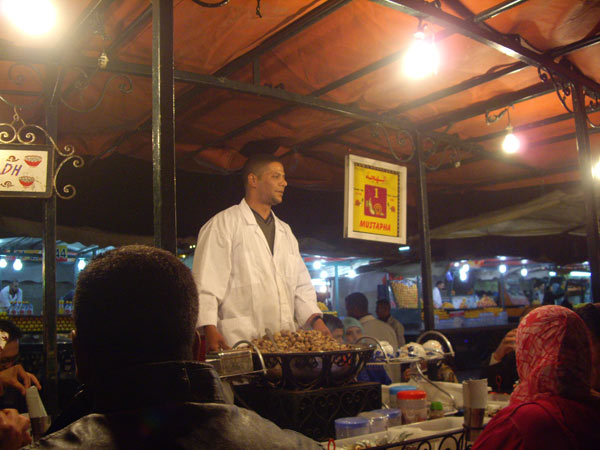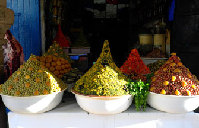Arabian nights and days
 |
|
A snail soup stall in Jemaa el Fna, an outdoor market in Marrakech. |
We asked Mehdi to recommend somewhere for pastilla, the sweet and savory Moroccan pie typically stuffed with poultry. He immediately booked us a table at Dar Zellij and had one of his staff escort us to the restaurant.
We sat in its open courtyard dotted with trees with their trunks painted white to mimic the whitewashed surrounds furnished with Moroccan antiques. As a lute player entertained us, we feasted on a six-course menu, featuring a myriad of Moroccan salads, succulent lamb tagine and sweet pastry with milk custard.
The next morning, we went for an extended walk beyond the medina walls and ended up at Marjorelle Gardens, adjacent to the home of the late fashion designer Yves Saint Laurent. The gardens were originally developed by French furniture maker Louis Marjorelle in 1924. After he passed away in the mid-1960s, the grounds were neglected until Saint Laurent restored them in the 1980s.
The 4.86-hectare garden contained a number of architectural features, including a monument to Saint Laurent, whose ashes were scattered on the grounds. Running from one end to another was a long reflecting pool that ended in a fountain leading to the Berber Museum. Cacti dominated, contrasting sharply against the intense colors of indigo, mustard and emerald. Despite the crowds jockeying for photo opportunities, the garden had a lush, tranquil quality that was a delightful respite in busy Marrakech.
As dusk approached, we wandered back into the medina and south to Jemaa el Fna. Marrakech's outdoor market boasts snake charmers and fortunetellers plying their trade alongside endless rows of hawkers selling harira soup, freshly squeezed citrus juices, snails, entrails and other Moroccan delicacies.
















